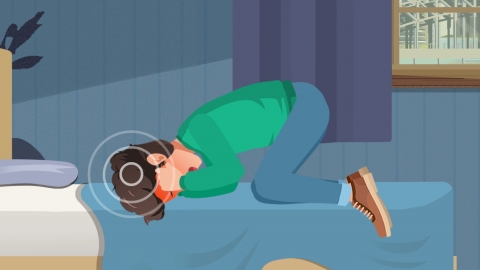Which medications can treat the problem of headache when lying down?
Generally, headaches when lying down may be related to improper sleeping posture, unsuitable pillow height, tension-type headaches, cervical spondylosis, hypertension, and other factors. Patients can use medications such as ibuprofen sustained-release capsules, celecoxib capsules, and valsartan capsules to alleviate symptoms, depending on the specific situation. Detailed explanations are as follows:
1. Improper sleeping posture
Maintaining a lateral sleeping position for prolonged periods, compressing one side of the head, or sleeping in a prone position with excessive neck twisting may hinder head blood circulation, leading to insufficient cerebral blood supply and headaches. Daily adjustments to sleeping posture are recommended, such as choosing supine or alternating lateral positions, avoiding prolonged maintenance of a single posture. Appropriate head massage before sleep can promote blood circulation and relieve headaches.
2. Unsuitable pillow height
An overly high pillow may cause excessive anterior flexion of the neck, pulling the head's nerves and blood vessels; a too low pillow may lead to an excessively low head position and excessive cerebral blood perfusion. Both situations may cause headaches. A suitable pillow height should be selected according to individual needs. Generally, it is recommended that the pillow height be approximately the same as the fist height, maintaining the natural physiological curvature of the cervical spine and reducing irritation to the head's nerves and blood vessels.

3. Tension-type headache
Long-term mental stress and anxiety may cause continuous contraction of head muscles. When lying down, if the muscle tension does not ease, headaches may occur, often manifesting as a tight, band-like head pain. Pain can be relieved by medications such as ibuprofen sustained-release capsules, acetaminophen tablets, and naproxen sodium tablets under a doctor's guidance. Additionally, listening to music and deep breathing can help relax the mind and body, reducing mental stress.
4. Cervical spondylosis
Conditions such as intervertebral disc protrusion and cervical osteophytes may compress the cervical nerves and vertebral arteries. When lying down, improper cervical posture may worsen the compression symptoms, affecting cerebral blood supply and causing headaches, which may be accompanied by neck stiffness and arm numbness. Cervical traction therapy can be performed under a doctor's guidance, and medications such as Jingfukang granules, mecobalamin tablets, and celecoxib capsules can be used to alleviate symptoms. In severe cases, anterior cervical discectomy and fusion or posterior cervical laminoplasty may be required.
5. Hypertension
For individuals with poorly controlled blood pressure, changes in body position when lying down may cause blood pressure fluctuations and elevation, increasing the pressure on cerebral blood vessels and causing headaches, often accompanied by dizziness and palpitations. Blood pressure should be controlled with medications such as nifedipine controlled-release tablets, irbesartan tablets, and valsartan capsules under a doctor's guidance. Additionally, maintaining a low-salt diet, avoiding emotional excitement, and regularly monitoring blood pressure changes are recommended.
In daily life, maintaining a regular schedule and avoiding staying up late are important. Engaging in appropriate aerobic exercises, such as walking and yoga, can enhance physical fitness. Avoiding prolonged periods of looking down at phones or computers helps protect the cervical spine. Regular blood pressure monitoring and timely adjustments to treatment plans are essential for maintaining good health.




